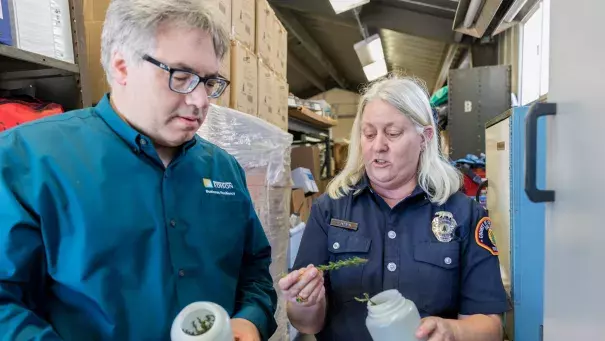Fuel experts warn wildfire season has come late, but locations are at breaking point now

California’s wildfire season is starting late this year, according to fire scientist Tom Rolinski, who monitors fuel conditions for Southern California Edison.
But the late start is no indication of a mild fire season ahead.
“There was a slow ramp-up to fire season this year," Rolinski said. "The fuel moistures we are currently seeing are more typical of early July.”
An unusually wet winter that yielded a super bloom, combined with a mild spring that kept vegetation wet, meant any fires did not consume a lot of acreage, Rolinski said. Recent above average temperatures are to blame for drying out plants, creating good fuels for wildfires.
“We’re at a breaking point now,” Rolinski said.
...
In Southern California, foothills and coastal mountains will have an above normal fire risk through October, with an unusually high fuel load due to an abundance of dead, dry vegetation that resulted from the unusually wet winter. The slower burning inland fires more typical of the summer are predicted to wind down in mid-September, and the fast-moving coastal fires more typical of the fall are expected to pick up around mid-October. A predicted later start to the rainy season also will contribute to the extended fire season.
Though the wet winter slowed tree mortality this year, according to data collected by the United States Forest Service, an additional 18 million trees died since the fall of 2017, contributing to the high fuel load this year. The situation has been most evident in the Sierra Nevada, where trees have been dying at an accelerated rate since the drought. More than 147 million trees have died in total since the drought, and nearly half of those died in 2016.


